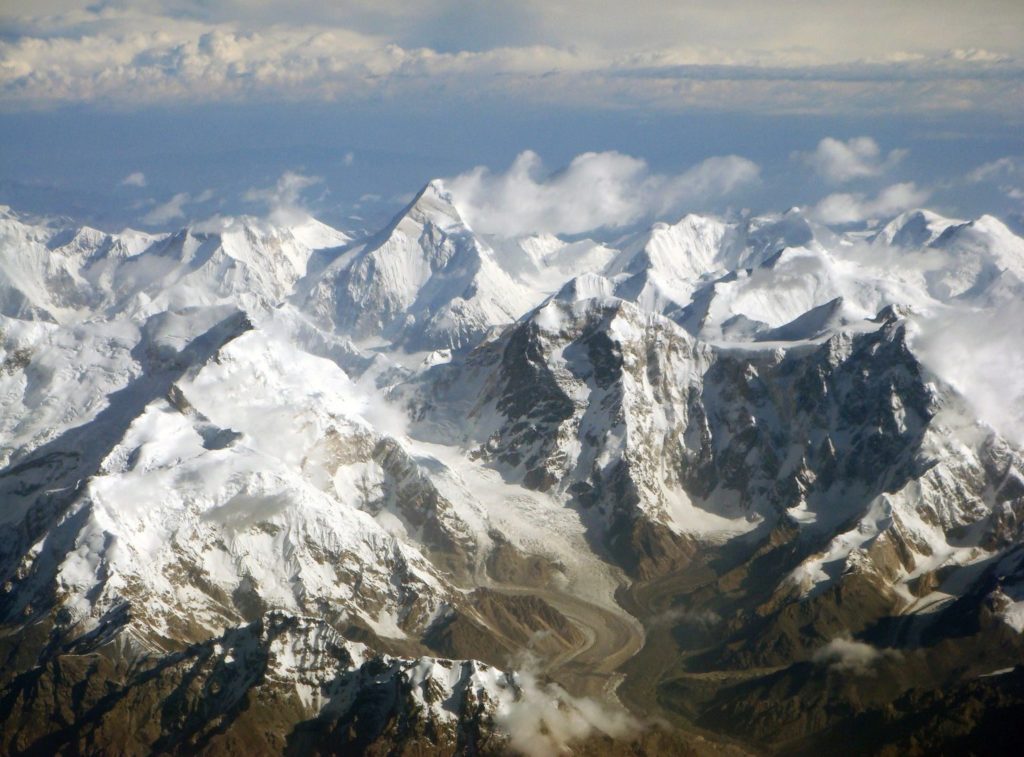CENTRAL ASIA SCIENCE REVIEW − Thanks to images provided by US intelligence agencies, researchers have been able to observe the recession of glaciers in Central Asia. In other news, Uzbek remains from the Iron Age have been examined to determine their origins. This article was originally published on Novastan’s French website on 27 October 2021. Many research studies conducted by local and international institutes and universities shed light on Central Asia. Novastan brings you a selection of recent studies on the region.
Tian Shan glaciers in constant recession since the 1960s
Because of global warming, melting glaciers in Asia will have direct consequences for the populations of Central Asia and their access to water. Studying the evolution of the glaciers is therefore crucial to foresee the consequences. However, estimations of the glaciers’ volume, via satellite observation, are rather recent and do not go back further than thirty years. In order to reconstruct the path of evolution prior to that date, an international team, including researchers from the Almaty Institute of Geography (located in southern Kazakhstan), have used an unexpected source of data: US intelligence agencies. In their study published last July in Nature Communications, scientists explain that they used satellite images from the US program CORONA, which operated between 1959 and 1972. These spy satellites were used by the US to monitor the USSR during the Cold War by taking images with a two-metre resolution. By using images from CORONA KH-4 and KH-9 which feature Asian glaciers, researchers were able to extend the estimation of the glaciers’ volume to the beginning of the 1960s. The results of their study show that the seven researched regions all suffered from a loss of ice mass during this time period, the main region being the northern part of the Tian Shan. Research also shows that this loss is strongly linked with summer temperatures. Read more on Novastan:Climate change could lead to ever more fluctuated temperatures in Central Asia Furthermore, the scientists state that in the Tian Shan, some glaciers have already permanently receded, whereas others that had seemed more stable are now starting to suffer from global warming, showing significant decline. This report shines a new light on the long-term evolution of glaciers, particularly within Central Asia. It could help to better understand the melting phenomenon which is linked to global warming and therefore to anticipate its consequences on Central Asia’s ecosystems and populations. The genetic origins of the Iron Age Uzbeks The different peoples and ethnicities of Central Asia have complex origins, which the latest gene sequencing developments are trying to decipher. To this end, a study published on 28 July in Molecular Biology and Evolution has focused on Iron Age Uzbek populations to determine their origins. By using genetic markers, scientists investigated the genome extracted from 27 individuals whose remains date back to the Iron Age (about 2100 to 1500 years ago) and had been found in southern modern-day Uzbekistan. By focusing on variations in single base pairs in DNA, researchers were able to determine continuity between Bronze Age populations of Iranian and Anatolian ancestry and Iron Age populations. However, their work reveals an increase in mixing with other steppe populations during the latter period. These results provide a better understanding of the cultural diversity of Iron Age peoples in this region by identifying the genetic differences present in them. The special case of fish diversity in Uzbekistan In other news about Uzbekistan, a study published on 19 August in Scientific Reports looked at the genetic diversity of fish in the country. Uzbekistan’s geographical situation is special because it is one of only two endorheic countries in the world – in other words, none of its rivers flow into any sea or ocean. This configuration makes it a closed river system that affects the biological diversity of fish. Bakhtiyor Sheraliev, from the Faculty of Life Sciences at Fergana State University, and his co-author Zuogang Peng, therefore wanted to survey the diversity of fish in this particular system. To do this, they collected 666 fish specimens from several rivers and lakes. These were found to belong to 59 different fish species. Read more on Novastan:Talas and its people: life by a Central Asian river affected by climate change The researchers identified the species by combining morphometric measurements with known genetic markers, thus making it possible to differentiate between each species. The results of their study show that the already low diversity of fish in Uzbek waters has continued to decline in recent years. Of the species identified, a handful are considered by the International Union for Conservation of Nature to be endangered. This study demonstrates the possibility of using a genetic identification approach to survey fish populations more quickly and accurately than conventional methods. In addition, the results reveal details of the current ecological diversity in Uzbekistan, which can be used to better protect threatened species and their ecosystems. Genetics reveal the appearance of Stipa capillata Also published in Scientific Reports are details about an international team which succeeded in sequencing the genome of Stipa capillata. The study was published on 28 July. This plant, which is one of the most widespread feathered grasses in Europe and Asia, is found extensively on the steppes of Central Asia. Knowing the distribution of the various species of the Stipa genus in these environments makes it possible to classify them to monitor their evolution, which is a particularly important task in the context of climate change. By sequencing the genome of specimens collected in Kyrgyzstan for the first time, the scientists were able to trace the origin of the Stipa genus. The analysis of the genome made it possible to estimate that the genus appeared around 4.39 million years ago. This study contributes to a better understanding of the steppe ecosystem, in particular to the diversity of plants, which remains insufficiently documented.
Written by Anthony Vial
Translated from French by Leopoldine Rigaud
Edited by Mari Paine
For more news and analysis from Central Asia, follow us on Twitter, Facebook, Telegram, Linkedin or Instagram.
 The recession of the Tian Shan glaciers and other recent studies
The recession of the Tian Shan glaciers and other recent studies 



